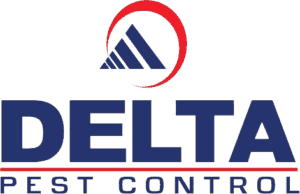
Imagine waking up in the middle of the night to the distinct sounds of scratching and scraping. Where is that noise coming from? Above you? In the wall next to your head? Both?! It might seem like you’ve been transported into a Stephen King novel, but the good news is it’s probably not ghosts. You may, however, have rats. So, how did they get inside? In this blog, we’ll discuss how rats may be getting into your attic.
How Do Rats Get in Attics?
Rats will invade your space, quickly making your home their home – and they don’t even pay rent (In this economy? Rude). Nesting in attic spaces, these squatters will find their way in through holes in the roof or ceiling, especially along vents or chimneys. Rats are able to fit their bodies into even tiny spaces. Shy and nocturnal, they can be hard to detect one they do gain entry.
How Do I Know It’s Rats?
Rodents are sneaky creatures, and it can be challenging to tell when you have an infestation before there’s major damage. Keeping an eye out for early signs of an infestation can help you catch the problem before it grows. Some common signs that you have rats in your attic include:
- Noises at night: Scraping, scurrying, and squeaking.
- Chew marks: Rats are prolific chewers. These pests are capable of chewing through wood, brick, concrete, plastic pipes, and even metals like tin, aluminum sheeting, steel, lead, copper, and gold.
- Urine odor and droppings: That’s right! They don’t pay rent, and they’re not even potty trained.
- Rat Nests: Rats will build nests out of pretty much anything; shredding paper, boxes, precious photos, clothes/fabric, and insulation. You’ll find their nests in the dark corners of your attic walls and crawl spaces.
- Unusual Pet Behavior: If your pet starts barking or meowing at night, they could be alerting you to rat activity.
Common Types of Roof Rats and Their Dangers
The most common rodents in Arkansas are:
- Roof Rat: Pretty aptly named if we do say so ourselves. These rats are about 13-15 inches long, slender, and typically gray to black in color.
- Norway Rat: Otherwise known as the brown rat, or sewer rat, these rats can get up to 16 inches in length! All rats can cause extensive damage with their chewing, but especially Norway rats.
Having a rat infestation is not only annoying and destructive, but also dangerous. While rats are shy, they can be quite aggressive and will attack and bite when they are disturbed or feel threatened. A rat’s bite — and even so much as a scratch — can expose you and/or your pets to disease like rat-bite fever which causes muscle pain, headache, rash, fever, and vomiting. Rats will also avoid rat traps, and rat poison can be a danger to your children and/or pets. Rat poison also allows the rats to go off and die in unknown or hard-to-reach places (like in your walls, or garage).
Why Choose Delta Pest Control
Due to the inherent dangers of rat infestation, it is so important to call a professional service right away. At Delta Pest Control our highly trained, state-certified, and licensed team of professionals have over 46 years of experience removing and preventing pests common to Arkansas. Utilizing innovative technology and customized pest management solutions, our team strives to provide you with the most effective and efficient experience possible.
We are a proud part of the Rentokil family, a global organization that strives for sustainability, with a goal to be net zero carbon emissions by 2040. With their support and our history of service, we are confident we can protect your home and help enhance your life. Don’t let rats take up residence in your attic – contact Delta Pest Control today!





